-
 Published: Jul 5, 2023
Published: Jul 5, 2023
-
 13 min. read
13 min. read
-
 Sina Mchunu
Sina Mchunu Research & Tech Content Writer
Research & Tech Content Writer
- Sina is a marketing expert who specializes in SEO, AI, and digital marketing content. With over five years of experience, she’s written hundreds of pieces, spanning a variety of topics and industry niches. She loves combining her strong eye for detail and passion for storytelling in her work. You’ll find her fruit picking or horse riding at the local farm when she’s not writing.
Sales collateral definition: Sales collateral is any assets and resources that aid in selling a company’s offerings. These resources inform prospects about a product or service’s value and persuade them to purchase.
Have you ever wondered how you could support the sales process and move prospects further down the sales funnel? Well, that’s where sales collateral comes in handy. It’s an effective technique that aids sales representatives in persuading potential buyers of the value of your goods or services.
Sales collateral can assist in developing trust and credibility with prospects by offering educational and engaging information, which can ultimately result in more sales and revenue for your company. Let’s examine what sales collateral is in more detail and explore examples you can utilize to improve your sales efforts.
Here’s what this article covers:
- What is sales collateral?
- How does collateral for sales impact your revenue growth?
- Types of sales collateral [+ real-life examples]
Let’s dive in!
Meet WebFX:
Your world-class, tech-enabled marketing agency with over 1.6 million hours of combined expertise.

What is sales collateral?
Sales collateral is the collection of materials and resources salespeople use to interact with prospects and clients. It can include flyers, presentations, demos, and other materials that inform and persuade customers.
How does collateral for sales impact your revenue growth?
Collateral for sales is essential for boosting your company’s income. Your sales team can successfully express your company’s value proposition to prospects and set it apart from rivals by offering captivating, high-quality marketing materials. This approach can increase sales, improve conversion rates, and increase revenue.
Moreover, marketing materials could be an effective strategy for generating and nurturing leads. You can attract and engage qualified leads, guide them through the buyer’s journey, and convert them into devoted customers by developing focused materials that speak directly to prospects’ requirements and pain points.
Investing in top-notch marketing materials can significantly improve your business’s financial performance, fostering growth and success.
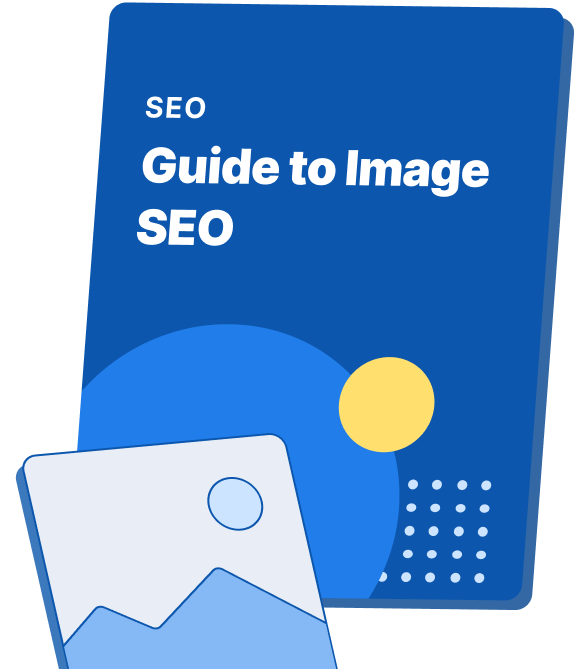

Images make up 62.6% of all searches
Learn how to optimize and leverage your website images for organic search!
Get My Free GuideTypes of sales collateral [+ real-life examples]
Sales collateral can come in many forms and serve different purposes. Some examples include:
- Product spec sheets
- Product demos
- White papers
- Case studies
- Brochures
- Email templates
- Social media posts
- Infographics
- sales scripts
- Video content
1. Product spec sheets
Product spec sheets are a type of sales collateral that offer comprehensive details regarding a product’s characteristics, requirements, and advantages. Your sales team can generally utilize these documents to inform prospects of the technical details of a product and to help them comprehend how it might fulfill their unique demands.
A product spec sheet is just as good as the information it contains, so accuracy and timeliness are paramount. You should represent it straightforwardly and emphasize the most crucial information. Your product specification sheet should include the following significant facts:
- product dimensions
- weight
- materials
- certifications or standards it meets
It’s also beneficial to highlight unique or cutting-edge features that distinguish the product from rivals.
Real-life example:
The iPhone’s specs page is an excellent example of a well-designed specs page. The Apple product sheet provides in-depth specifications on the device’s size, weight, construction, and compliance with several industry standards and certifications. It also emphasizes the iPhone’s distinctive qualities, including its A14 Bionic processor and Super Retina XDR screen.
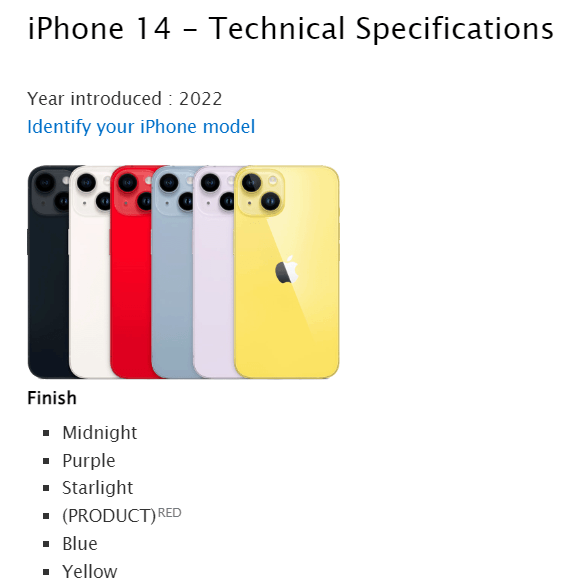
The iPhone’s attention to detail and dedication to innovation set it apart from competing smartphones and contribute to its widespread popularity. Apple’s product specification sheet equips buyers with all the data they need to make educated selections and feel good about their choice of smartphone.
2. Product demos
Product demos are a highly successful kind of sales material. Clients can better understand your product’s value through hands-on experience. To achieve this, you can:
- Provide a live demonstration
- Give a virtual reality experience
- Create a video demo
- Offer a free trial
Product demonstrations are beneficial for complicated or technically sophisticated items that call for a greater degree of comprehension. You can also use them to highlight new or cutting-edge elements that must be more readily evident from marketing materials alone.
Real-life example:
Tesla’s introduction of the Model 3 electric automobile is one actual instance of a successful product showcase. Elon Mask offered live demos in its showroom locations so prospective buyers could personally experience the vehicle’s features and performance. This strategy demonstrated the car’s remarkable acceleration and handling while demystifying the technology.

Customers could ask questions and get prompt responses from skilled salespeople during the live demos, which helped foster trust and confidence in the product. This live demo led to over 500,000 pre-orders for the Model 3.
3. White papers
White papers demonstrate a company’s competence while educating prospects on complex subjects. They often include in-depth analysis and research and are longer than other sales materials. White papers can contain the following information:
- The benefits of the offering
- Industry trends
- Statistics to support the claims made
White papers have several uses in sales, from generating leads to finalizing negotiations. In addition to using them as-is, your team can transform them into blog entries or infographics to increase their exposure and usefulness.
Real-life example:
Microsoft is a well-known software developer that often releases helpful white papers. Their white papers offer in-depth research and analysis to support their solutions and cover a variety of subjects, including cloud computing and cybersecurity. Microsoft was able to cement its position as an industry leader and subject matter expert through its white papers.
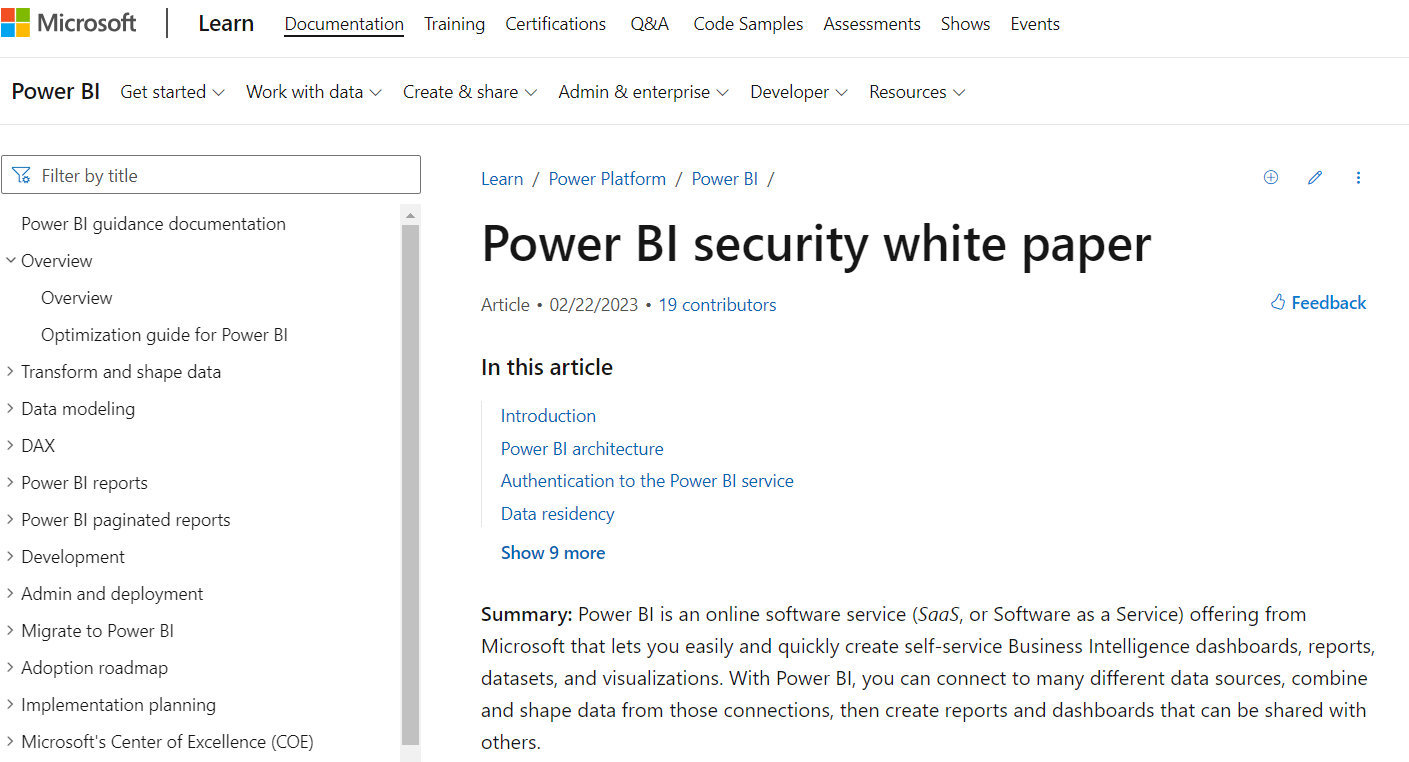
They established credibility and trust with their target audience by giving them helpful information and insights, which eventually resulted in higher sales and devoted patrons. Millions of people have downloaded Microsoft’s white papers, making them an effective weapon in their marketing plan.
4. Case studies
Case studies explain how a company’s product or service has benefited a particular client or fixed a specific issue. Your businesses can use them to demonstrate the effectiveness of your offerings and give prospects real-world scenarios of how they might profit from utilizing the good or service.
Case studies typically include details about:
- The customer’s problems
- The company’s solution
- The outcomes
Moreover, case studies frequently feature customer quotes or testimonials, which can establish credibility with new clients. Your case studies can include indicators like cost savings, higher revenue, or enhanced efficiency to offer verifiable proof of the effectiveness of your company’s product or service.
Real-life example:
Nutshell is one business that has done an excellent job of using case studies to emphasize the benefits of its products. These case studies demonstrate how their customer relationship management (CRM) software has aided organizations in streamlining sales procedures, boosting sales, and developing deeper customer relationships.
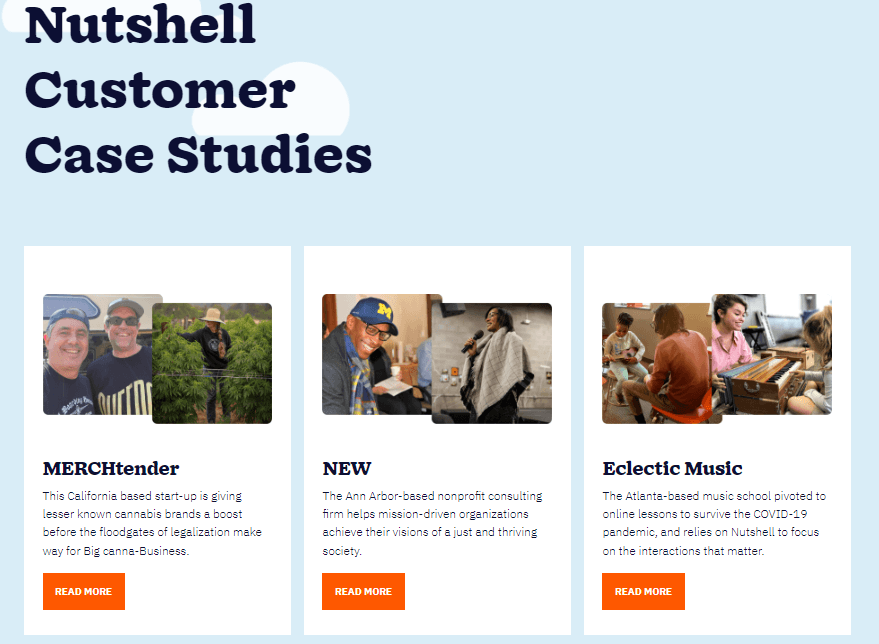
Nutshell convinces prospects of its product’s value by providing testimonials from pleased customers and data on the effectiveness of its implementation. Moreover, Nutshell’s case studies frequently include a thorough examination of the particular difficulties its clients encountered before putting the CRM software in place and how Nutshell could assist them in overcoming those difficulties.
5. Brochures
One of the most widely used types of sales collateral for businesses is brochures. They typically consist of a single paper sheet folded in half or thirds to form a little booklet. You can use pamphlets at trade exhibitions and conferences to give an overview of your company’s offerings. You can also distribute them to prospects or bundle them with sales kits.
You can use brochures to:
- Showcase your company’s products or services
- Highlight your unique selling points (USPs)
- Provide contact information
In addition, your business can produce digital brochures that you can distribute via email or social media. These interactive elements in the digital brochures make them more engaging and educational for potential clients by adding movies and connections to more information.
Real-life examples:
RE/MAX is one example of a real estate business that uses sales kits — they provide brochures highlighting their many property listings and services. These booklets provide contact information for potential buyers or sellers and highlight their distinctive selling advantages, such as their skilled agents and international network.

RE/MAX also provides digital brochures with interactive elements like virtual tours and property videos to accompany their print marketing. Their prospects can explore properties conveniently from the comfort of their homes by quickly accessing these digital brochures through email campaigns or on their website.
6. Email templates
Email templates are pre-made messages that you can alter to meet the requirements of a particular sales campaign or target audience. They are a time-saving solution that guarantees message and branding uniformity across all communication channels. You can use them to:
- Promote new products or services
- Announce special promotions or discounts
- Engage with customers and prospects
- Track engagement
- Measure the success of a sales campaign
Email templates are customizable with brand names, logos, and other visuals, and you can create them in HTML, plain text, or rich media. They are a powerful tool for connecting with clients and potential clients, and they help build enduring bonds and boost client loyalty.
Real-life example:
Shein is a real-world example of the effectiveness of email marketing. The clothing retailer efficiently communicates with its consumers and prospects through email marketing campaigns, offering special offers and discounts and informing them about new items and collections.
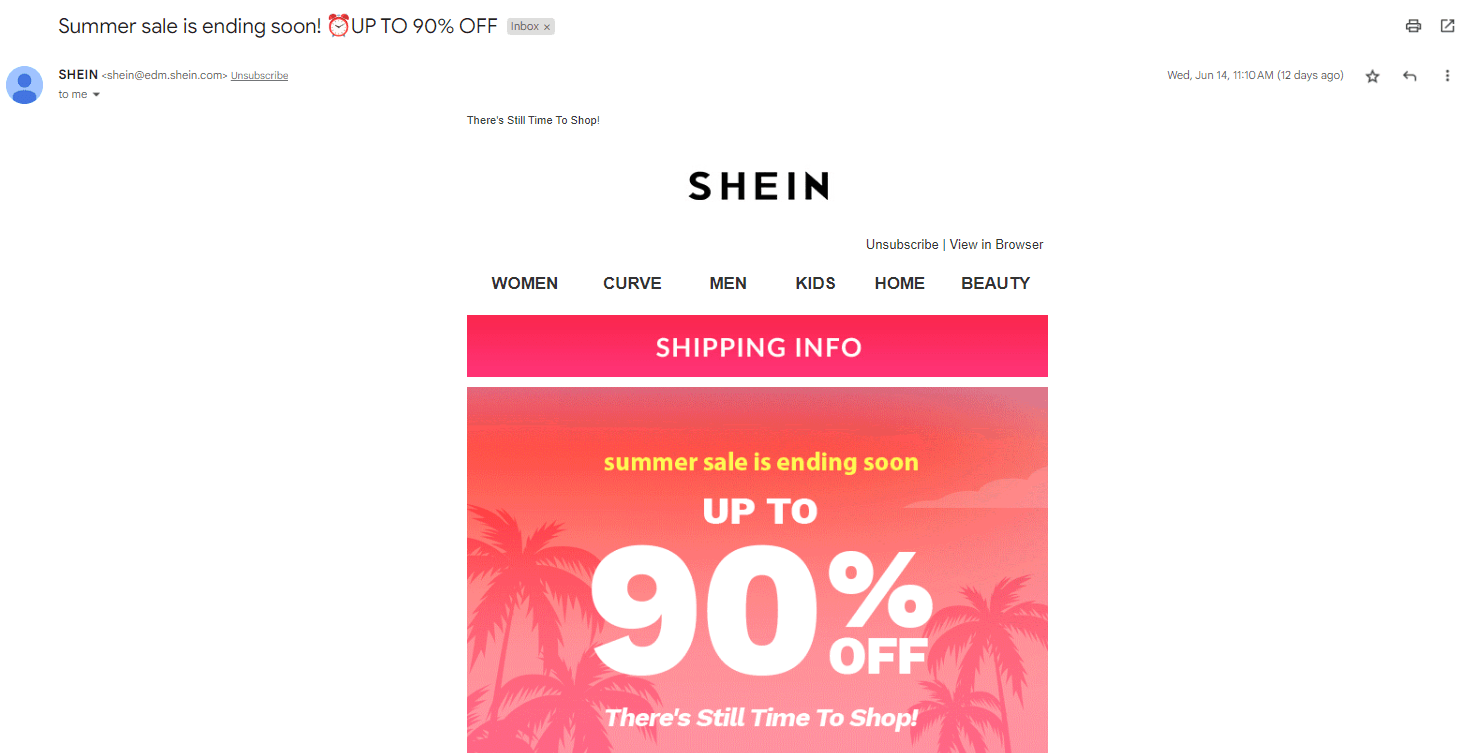
Shein improved their email marketing approach and boosted their return on investment (ROI) by monitoring interactions and gauging the effectiveness of their sales initiatives. The retailer reported $10 billion in sales in 2020, which they mostly credit to their email marketing strategies.
7. Social media posts
Social media posts are one type of sales collateral that has grown in popularity recently. Businesses are now aware of the opportunities presented by social media sites for connecting with a broader audience. You can use posts on social media to:
- Promote products or services
- Share company news or events
- Engage with customers and followers
They are a valuable tool to broaden your customer base since you can customize them to particular target segments or demographics. Posts on social media allow your company to show off its brand personality and engage with customers on a more personal level, in addition to their reach and targeting possibilities.
You can encourage followers’ trust and loyalty by providing behind-the-scenes looks at your business operations or showcasing its corporate culture.
Real-life examples:
Wendy’s is one example of a company using social media to convey its brand identity successfully. The fast-food restaurant brand has developed a reputation for its snarky and funny Twitter account, which frequently interacts with clients and rivals lightheartedly.
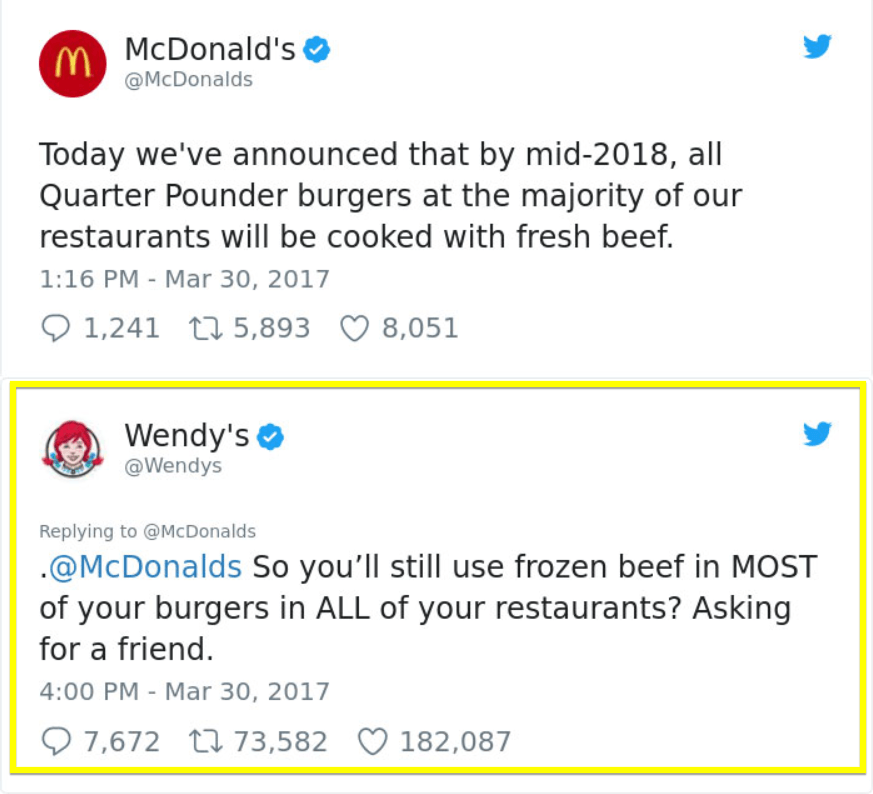
This strategy has helped Wendy’s stand out in a crowded industry and develop a devoted following of clients who value their authenticity and sense of humor.
8. Infographics
You can also utilize infographics as sales material to convey detailed information to your target market graphically. These graphics understandably show data by combining text, pictures, and charts. Uses for infographics include:
- Showcasing a company’s products or services
- Highlighting industry trends
- Providing insights into a specific topic
They can be an effective technique for raising brand recognition and engagement because they are easy to share on social media. You can also utilize infographics to explain complex concepts or procedures to audiences. They are an efficient tool for communication because they can pack a lot of information into a visually appealing and understandable style.
Real-life example:
The Center for Disease Control and Prevention (CDC) is a practical illustration of the effectiveness of infographics. The health care organization utilized infographics to spread the word about the value of good cleanliness and handwashing. Their “Clean Hands Count” infographic campaign used eye-catching graphics and straightforward language to deliver the message.
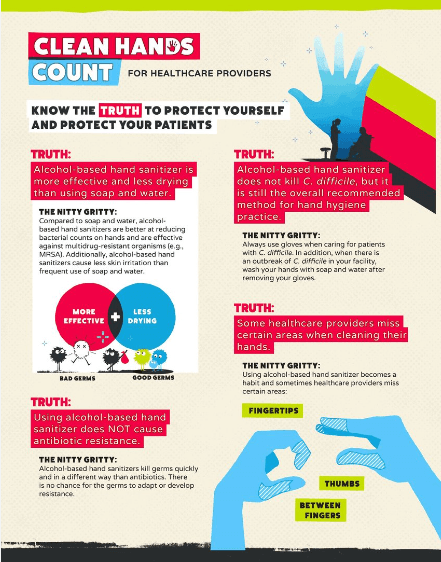
The campaign was a big hit, with millions of shares and reactions from viewers worldwide. This campaign shows how infographics can be a powerful tool for spreading important messages, educating the public, and growing brand perception.
9. Sales scripts
A sales script is a pre-written series of talking points and questions that sales reps use to lead a conversation with a prospect. These scripts may ensure that every salesperson presents prospects with a unified message and brand image. Sales scripts are intended to:
- Help salespeople stay on message
- Address common objections
- Close more deals
Sales scripts can benefit rookie salespeople who may still need the knowledge or self-assurance to improvise on the spot during a sales call. They are a flexible tool for any sales team since you can modify them for specific items or target markets.
Real-life example:
Amway, a direct selling business that sells health, beauty, and home care items, is one example of a company that uses sales scripts. Amway gives their independent business owners sales scripts to assist them in answering frequent concerns from potential consumers and successfully conveying the benefits of their goods.

Amway’s salespeople can better stay on message and close more transactions when they adhere to these scripts.
10. Video content
Recently, video content has become increasingly popular as sales collateral. It enables your company to attract potential customers’ attention by showcasing your goods or services compellingly and dynamically. You can use videos in various ways, such as:
- Product demonstrations
- Customer testimonials
- Animated explainers
Video content is also a flexible and efficient tool for reaching a broad audience because it is simple to share on social media networks and embed on websites.
Real-time examples:
Nike is a business that is aware of the potential of video content. They frequently produce animated explainers, client testimonials, and product demos highlighting their cutting-edge sporting apparel and equipment.
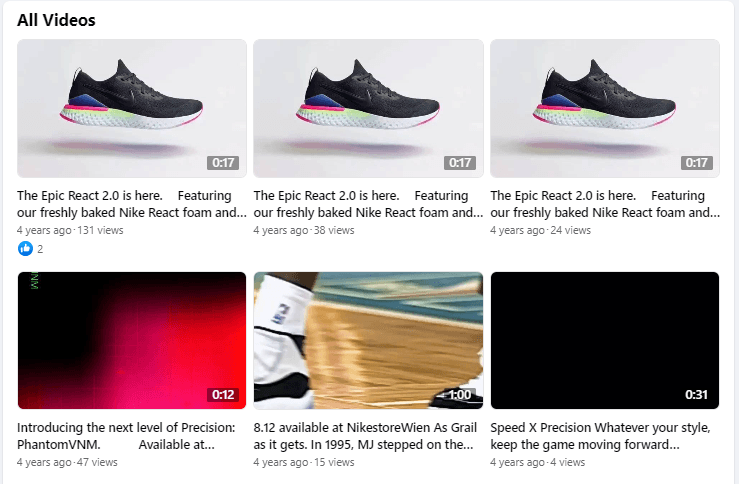
Nike can reach a large audience on various social media channels and embed their films on their website for simple access by investing in high-quality video production. Nike has effectively incorporated video into their overall marketing strategy through strategic planning and continues to motivate athletes worldwide.
Let WebFX help you boost your online presence with a personalized plan tailored to your business needs.
Create revenue-generating sales collateral with WebFX
WebFX provides several services to assist businesses in creating revenue-generating collateral for sales. Our skilled marketing and design team can collaborate with you to create personalized materials that highlight your brand and boost conversions.
We can produce sales collateral that resonates with your target audience and motivates them to take action, from brochures and flyers to whitepapers and case studies. Furthermore, our data-driven approach guarantees that your products are tailored for optimum effect and ROI.
Contact us online or call 888-601-5359 to learn more about how our digital marketing services can help your business grow.
-
 Sina is a marketing expert who specializes in SEO, AI, and digital marketing content. With over five years of experience, she’s written hundreds of pieces, spanning a variety of topics and industry niches. She loves combining her strong eye for detail and passion for storytelling in her work. You’ll find her fruit picking or horse riding at the local farm when she’s not writing.
Sina is a marketing expert who specializes in SEO, AI, and digital marketing content. With over five years of experience, she’s written hundreds of pieces, spanning a variety of topics and industry niches. She loves combining her strong eye for detail and passion for storytelling in her work. You’ll find her fruit picking or horse riding at the local farm when she’s not writing. -

WebFX is a full-service marketing agency with 1,100+ client reviews and a 4.9-star rating on Clutch! Find out how our expert team and revenue-accelerating tech can drive results for you! Learn more
Try our free Marketing Calculator
Craft a tailored online marketing strategy! Utilize our free Internet marketing calculator for a custom plan based on your location, reach, timeframe, and budget.
Plan Your Marketing Budget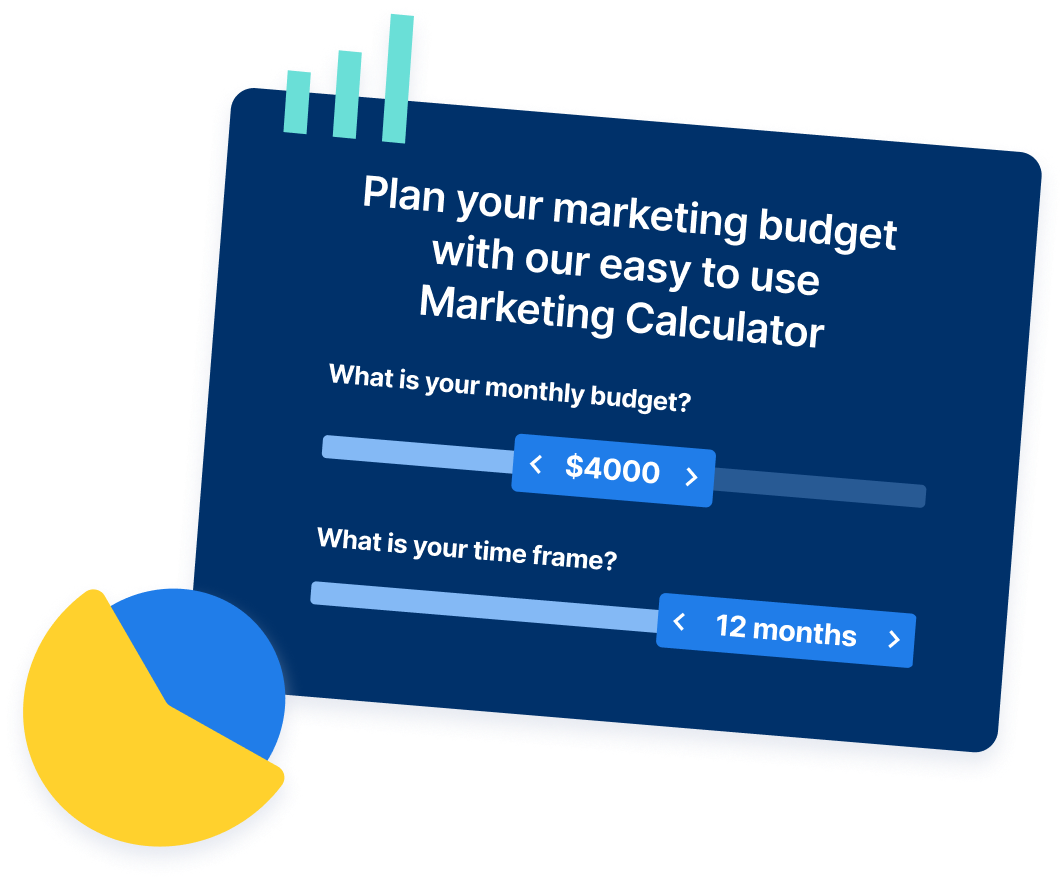
Table of Contents
- What is sales collateral?
- How does collateral for sales impact your revenue growth?
- Types of sales collateral [+ real-life examples]
- 1. Product spec sheets
- 2. Product demos
- 3. White papers
- 4. Case studies
- 5. Brochures
- 6. Email templates
- 7. Social media posts
- 8. Infographics
- 9. Sales scripts
- 10. Video content
- Create revenue-generating sales collateral with WebFX

Proven Marketing Strategies

Proven Marketing Strategies
Try our free Marketing Calculator
Craft a tailored online marketing strategy! Utilize our free Internet marketing calculator for a custom plan based on your location, reach, timeframe, and budget.
Plan Your Marketing Budget
What to read next





